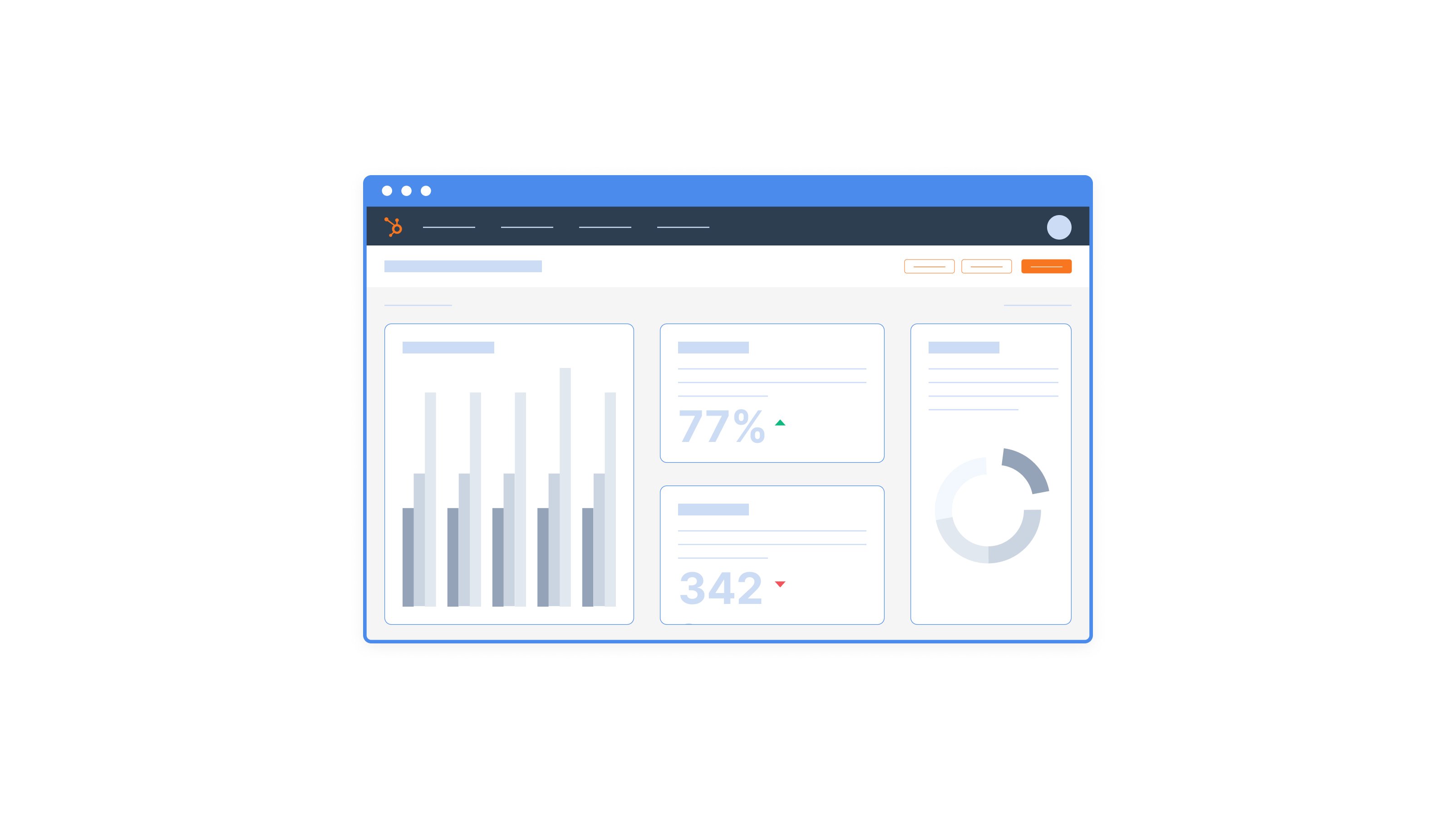Optimizing your HubSpot CRM is essential for SaaS companies aiming for scalable growth and efficiency. By standardizing data, automating manual tasks, and refining reporting processes, your CRM becomes a powerful engine driving both productivity and accuracy.
In this blog, we'll highlight key strategies to enhance your HubSpot CRM, streamline workflows, and ensure your team spends more time on strategic initiatives, not tedious tasks.
What is Optimization In HubSpot CRM?
Optimizing your HubSpot CRM means reorganizing, standardizing, improving your data and reporting, and configuring workflows so that tasks can be completed automatically.
For instance, SDRs no longer have to remember to email prospects 24 hours after a sales call to follow up, your HubSpot CRM can send an email automatically. No lead will be stuck at the wrong stage, as that can be automated. You can also improve reporting to get a full picture of your data.
Five Key Benefits of Optimizing Your SaaS HubSpot
There are various advantages of implementing a standardized and automated system, such as:
- Automated systems will function much faster than manual ones.
- Team members get their time back, so they can be more strategic.
- Human error is reduced as tasks won’t be forgotten.
- The task is always completed and standards met.
- The volume of processes increases.
Three Key Optimizations in HubSpot’s CRM?
Let’s look at some of the main areas we can optimize:
1. Naming conventions
All of your Hubspot assets should have their names consistently assigned.
At Kalungi, we use prefixes depending on their function (like "Notification," "Internal Process"), and keep assets correctly organized in folders and grouped by their functionality. Including keywords in your asset names helps people to locate them faster.
By standardizing naming conventions, you make it easier for your team to find and use assets across campaigns, emails, workflows, and reports. It helps avoid unnecessary confusion that would hinder otherwise straightforward processes. It also reduces the duplication of assets that already exist which make your data harder to understand.
Naming conventions dos & don'ts
- Don’t use generic names like “New Campaign” or “New Resource”.
- Do make sure that your naming conventions are concise yet descriptive, providing enough information for your team to identify the purpose and context of each asset. ]
- Do keep names short and descriptive: Shorter names are better than longer names, as they are easier to read and understand.
- Do maintain consistency across asset types to simplify tracking and asset management. The names of related assets should follow a single convention across asset types.
- Do follow alphabetical order: Combinations should follow alphabetical order, e.g., "Email+LinkedIn" vs. "LinkedIn+Email."
- Do differentiate geographic markets: Use region prefixes in brackets to differentiate between geo markets and countries/regions, e.g., [UK] 2023 Summer Sale.
2. Lifecycle stage back-filling
None of your contacts and companies should skip any lifecycle stages. By backfilling the time stamps for skipped lifecycle stages to artificially pass each contact and company through each stage of the funnel up to their current stage.
Having a complete and accurate full funnel report will help you make more informed business decisions and to plan based on actual insights rather than gut feelings.
Lifecycle stages dos & don'ts
- Don't add or modify lifecycle stages from the subscriber to the customer stages.
- Don't add lifecycle stages for active and inactive clients.
- Don't use pipeline stages as statuses.
- Do add extra lifecycle stages after the customer stage that reflects your sales cycle.
- Do use the active client property to determine if a client is active or inactive.
- Do create pipeline stages for actions that need to happen rather than in-between statuses.
3. Cohort reporting vs. dynamic reporting
There are two types of reports based on time:
A cohort report is a static view based on the created date of a contact, company etc.
A dynamic report is based on timestamps that track when a property changes over time, for example, when the lifecycle stage or deal stage of a specific contact or deal changes in the pipeline.
A cohort report can give you the full funnel data for a particular time range, and with this information, you can calculate lifecycle stage conversion rates. Meanwhile, dynamic reporting can give you a snapshot of the current data and how it evolves over time. So, by combining cohort and dynamic reporting you get the full picture of how your data behaves.
Six Key HubSpot Automations
When we talk about automation, most companies think only about email automation with services like Mailchimp, but automation within HubSpot CRM can cover many more things, such as:
- Lead capture (forms, CTAs).
- Contact segmentation and lead scoring.
- Messaging and nurturing.
- Assignment of properties such as lifecycle stages.
- Tracking changes and updates over time for specific properties to have more thorough and efficient reporting.
- Analyzing metrics and KPIs to make decisions and plan accordingly.
There are many ways to quantify and measure your success, we recommend that fast-growing SaaS companies focus on paying close and consistent attention to a few essential metrics.
At Kalungi, we’ve worked with hundreds of SaaS companies to optimize and automate their HubSpot CRMs. We’ve done it so much that HubSpot recognized us as a Diamond Partner!
Set Yourself Up For Success With An Optimized HubSpot CRM
If you need help to set up, standardize, organize, and automate your CRM, let’s talk! Kalungi’s unique solution and HubSpot expertise enables you to easily sort out your CRM quickly and provide accurate and complete visibility on your business’s performance.
You get a fully optimized HubSpot CRM instance with organized assets that are easy to find. All your data is clean, trustworthy, and automated, and complete reports and easy to understand dashboards.
Set up some time to talk with our team about how our instantly-on marketing team can help you build a better, more efficient CRM.
LET'S TALK
